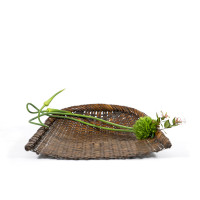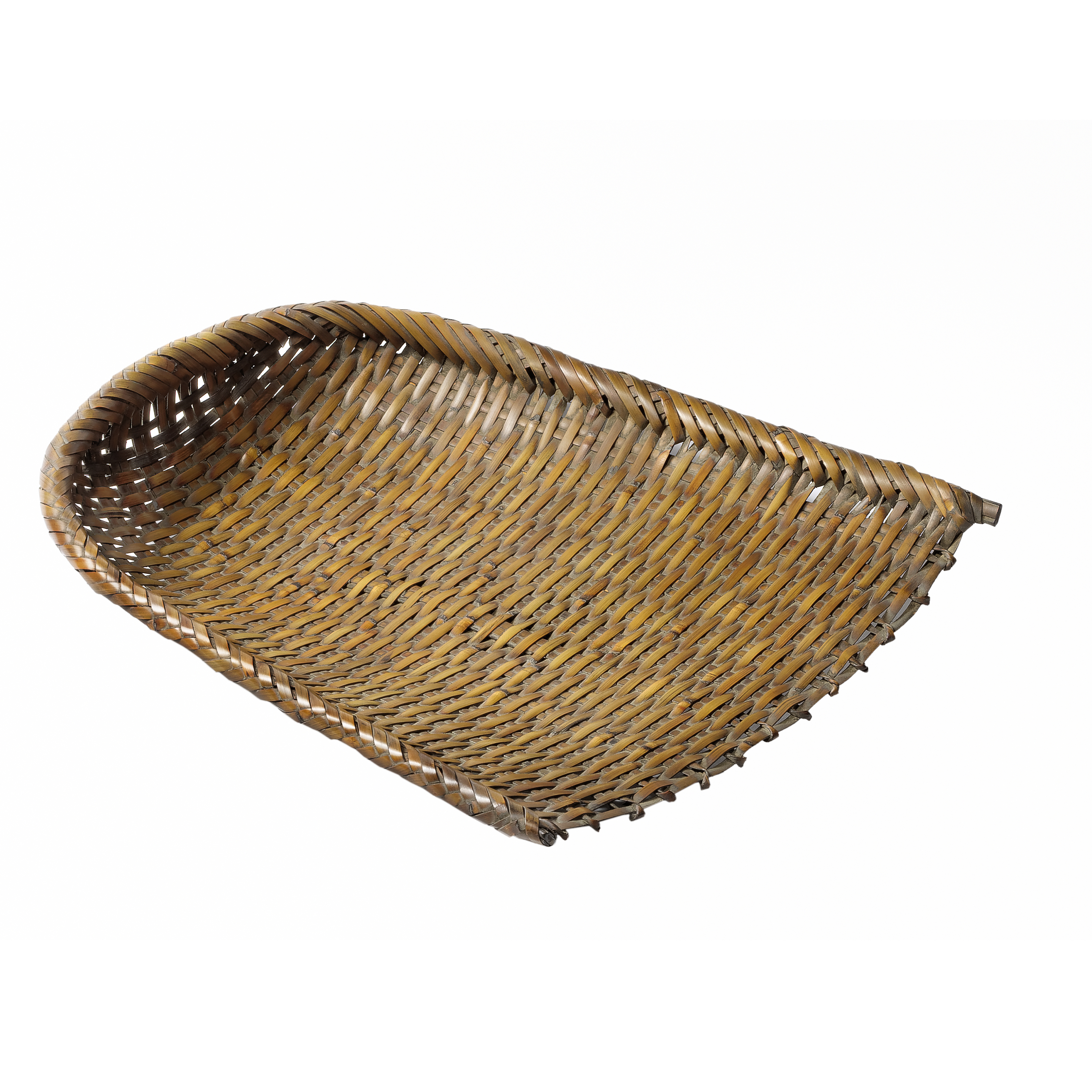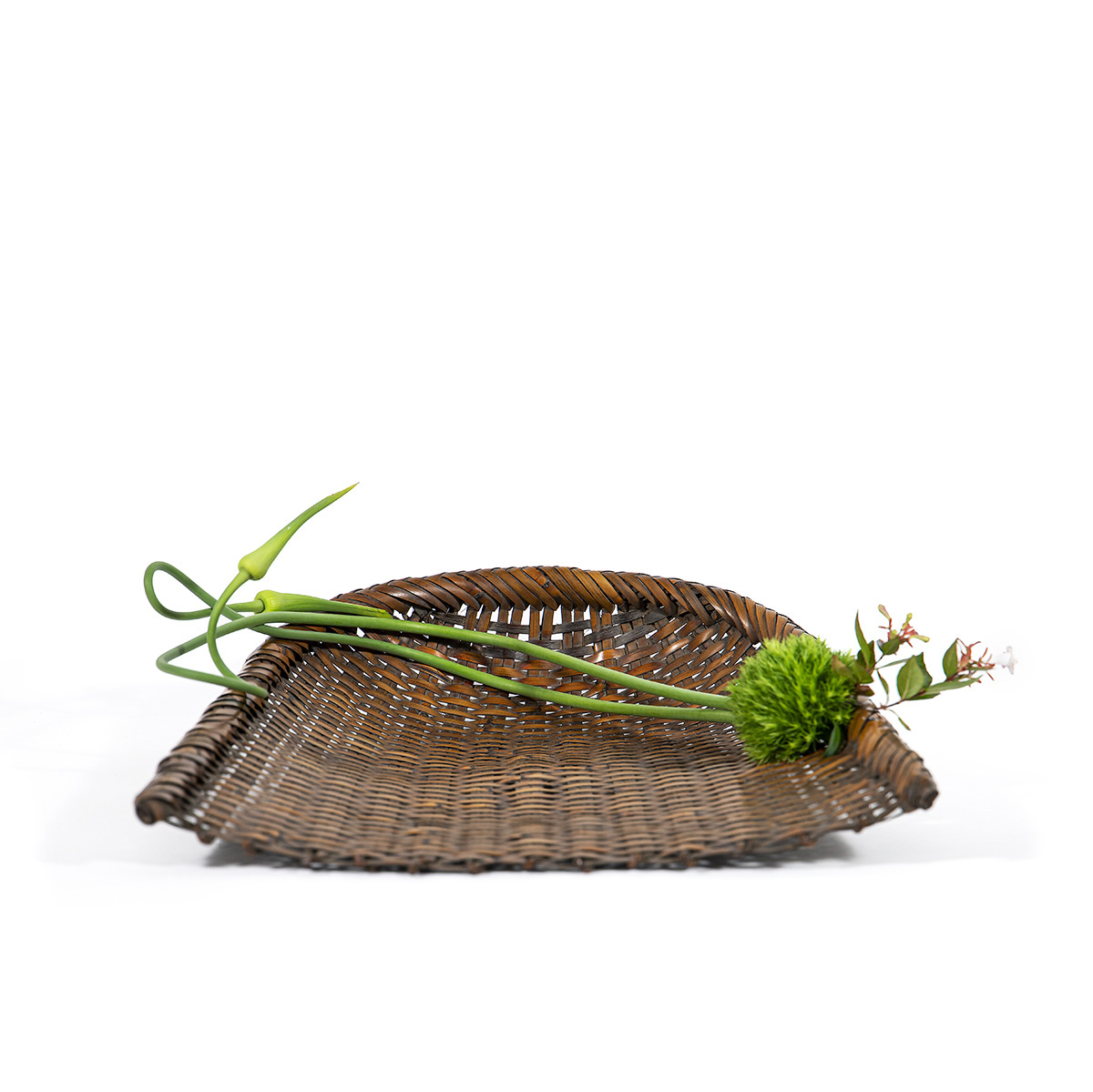Kakkomi
Hōsai II / Bamboo


- Contact Us
-
Material
Bamboo (shira-sabidake, White bamboo)
-
Size
6 (h) x 37 x 33 cm
-
Period
1916-1934 >>> circa 1930. Iizuka Kikuji succeeds as Hōsai II in 1916, and the hand-writing on the hakogaki demonstrates his mature calligraphic style and his wit in playing with pun words.
-
Published
“ IIZUKA - Dynasty and disciples “ - Mingei Gallery - 2020 -
More informations
Iizuka Hōsai II (1872-1934)
Description
“Kakkomi” (Raking-in)
“Raking in Victory and Happiness” as the artist’s hakogaki says
.....................
Box: Tomobako
Top : Kakkomi (Raking-in)
Back : Hōsai sanjin saku kore (Hōsai made this, the mountain man (sanjin))
A paper label is placesd on the side of the box : « Dainijuyongo, Shira-sabidake, Mi, kashibon » (Number 24, White bamboo, Winnowing Scoop, a tray for sweets)
.....................
The hakogaki title is written in rebus, a puzzle and pun with words. The three kanji characters chosen by the artist are 勝 幸 箕 – “Katsu (Victory)”, “Ko (Happiness)” and “Mi (A sieve scoop)” which are phonetically borrowed words to represent an action “Kakkomi (to rake in)”
This is a fortune winnowing basket (Fukumi in Japanese), in this example it is used as a tray for sweets. However, the work will be equally suitable to display the first harvest of rice grains (shinmai) and seasonal fruits and vegetables etc. The traditional winnowing rattan & bamboo sieve baskets are used in agricultural and domestic settings to sieve grains etc.
The Kumade (a raking-in broom) and Fukumi (a winnowing basket) are associated with the Gods Ebisu, Daikoku, and Goddess Otakufu. The Kumade and Fukumi metaphorically « rake in » good luck health, safety, happiness, wealth, success etc.

